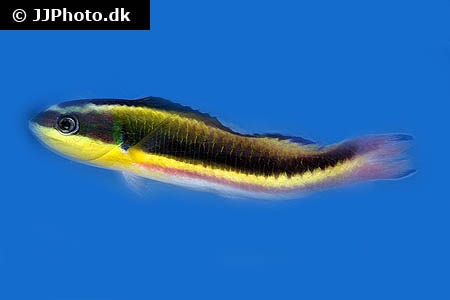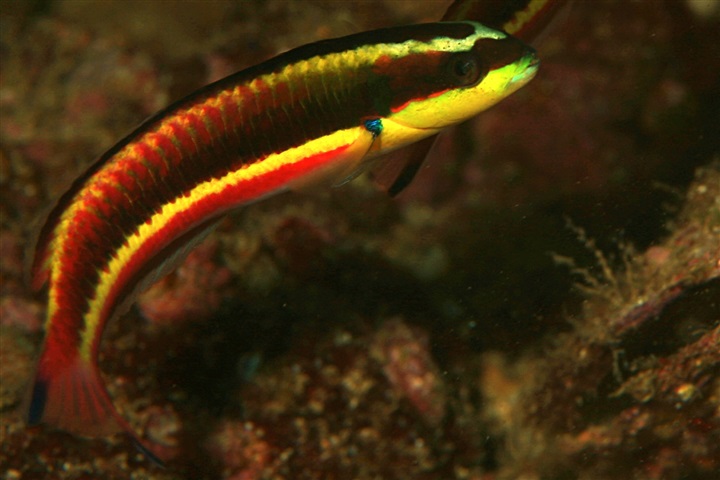Thalassoma lucasanum


| Latin name | Thalassoma lucasanum - (Gill, 1862) |
|---|---|
| Local name | Cortez rainbow wrasse |
| Family | Labridae - Thalassoma |
| Origin | The Mexican Golf, West Atlantic |
| Max length | 15 cm (5.9") |
| Minimum volume |
800 l (211 gal) |
|---|---|
| Hardiness |
Hardy |
| Suitable for aquarium |
Suitable with care |
| Reef safe |
Reef safe with caution |
| Aggressiveness | Might be aggressive towards similar species |
| Recommended |
Larger crustaceans (Shrimp, crabs...) Other invertebrates Small crustaceans (Krill, mysis, artemia...) Zooplankton (Cyclops, pods...) |
|---|---|
| Maybee |
Parasites |
This species is known to jump out of open aquaria.
This species poses a threat towards shrimps and crabs etc., which are relatively small.
This species must be fed with an appropriately varied diet.
In the aquarium the colour of this species can become matte.
Food with plenty of pigment and generally a varied diet of high quality can help alleviate colour loss.
This fish requires feeding several times a day, especially when newly added.
When the fish can find its natural food in the aquarium it requires less frequent feeding.
This species needs good hiding places, for example, between live rocks.
This species revels in swimming and requires an aquarium with ample space.
This species can be aggressive if they are not provided with adequate space.
This species functions best as a pair (one male, one female), or one male with several females.
This species can change gender from female to male.
When a male is needed, a female changes sex and takes on the role.
This species is able to remove parasites from fish.
It does not have a great impact on a large outbreak of marine ich (Cryptocaryon), for example, but it contributes towards keeping fish parasite free.
Constant cleaning can stress the fish in the aquarium, so one should not add this fish which removes parasites, if the fish are already weakened through other causes.
Not all specimens actively clean fish.
When fully grown the pattern and colour will change, so the fish has three colours: green, yellow and red.
Thalassoma species are beautiful both as juveniles and as adult fish, even though there is quite a difference in appearance. On the whole, they quickly grow too large for most aquaria and are therefore often offered for sale.
Depending on size they live on everything from Artemia to larger invertebrates like snails, crustaceans and sea urchins. They are well able to smash larger crustaceans on rocks to get pieces small enough to swallow.
Large individuals can be extremely aggressive towards other fish and will happily eat the smaller ones.
They should really be fed three times daily, as they are very active, which incidentally, means they require a lot of swimming space.
Although these Wrasses often dig themselves into the sand, a sandy substrate is not absolutely necessary for them to thrive.
Wrasses are nearly always seen in reef aquaria, since many of the species are both attractive and useful in battling a range of unwanted invertebrates like i.e. flatworms, pyramide snails.
These fish live of everything from zooplankton to large crustaceans, sea urchins and the like.
The needs and behaviour of Wrasses vary greatly, so it is vital to familiarize oneself with the specific species before buying one.
| Aquarium trade | Yes |
|---|---|
| Distribution | Eastern Pacific: Gulf of California to Peru, including the Galapagos. |
Bob Fenner. Wrasses of the Genus Thalassoma - Wet Web Media - (English)
Scott W. Michael. 2009. Wrasses and Parrotfishes (Reef Fishes Series Book 5) - TFH Publications / Microcosm Ltd. - (English)

